-

Oct
19
Interpretive Summary: Development of genetically improved tropical-adapted dairy cattle

According to recent estimates, about 80% of cattle reside in tropical or subtropical regions (Cooke et al., 2020a). The number of farmers and consumers, as well as overall production (e.g., annual milk production), is also greater in the tropics. However, cattle productivity in these regions is underwhelming compared with most temperate zones characterized by high-input farming practices and yields correlated with the fitness of the breeds to their system.
Read more
-

Oct
19
Interpretive Summary: Breeds and lines of sheep suitable for production in challenging environments

The adaptability and success of sheep are confirmed by the fact that they are the world’s most diverse mammalian livestock species, contributing some 25% to the global number of farm animal breeds (Cottle, 2010). The latter author showed that the ovine species is indeed globally successful and present in farming landscapes throughout the world, ranging from arid to high rainfall areas and from sea level to the highest mountains.
Read more
-

Oct
12
Interpretive Summary: Rumen and cecum bacteria of beef cattle that differ in feed efficiency fed a forage diet
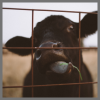
Feed is one of the greatest costs associated with beef production. Modifying the efficiency that feed is used offers a potential mechanism to improve production efficiency.
Read more
-

Oct
12
Interpretive Summary: Effect of increasing concentration of ergot alkaloids in the diet of feedlot cattle: performance, welfare, and health parameters

Ergot alkaloids (EA) are produced by a parasitic fungus (Claviceps purpurea) during the cereal grain growth cycle. Feeding cereal grain containing EA to beef cattle can cause constriction of blood vessels, hyperthermia, gangrene of extremities (ears, hoof, and tail), reduced feed intake and growth, and even death. Feed cleaning and processing technologies have been developed to remove EA from the human food chain, thus diverting contaminated feed for livestock use.
Read more
-

Oct
12
Interpretive Summary: Effects of wildfire smoke PM2.5 on indicators of inflammation, health, and metabolism of preweaned Holstein heifers

Wildfires contribute to fine particulate matter (PM2.5) pollution throughout the United States. Wildfire-PM2.5 exposure negatively affects human health and dairy cow production; however, the effects on calves are not known.
Read more
-

Oct
12
Interpretive Summary: Genetic parameters for pulmonary arterial pressure, yearling performance, and carcass ultrasound traits in Angus cattle

Beef cattle residing >1,500 m are subject to reduced atmospheric oxygen levels when compared with beef cattle at lower elevations which may result in hypoxia-induced pulmonary hypertension and right-side heart failure. Breeders use pulmonary arterial pressures to identify animals at risk of right-side heart failure and to select breeding animals that are less susceptible to the problem.
Read more
-

Oct
12
Interpretive Summary: Changes in gut microbiota and short-chain fatty acids are involved in the process of canine obesity after neutering

Neutering contributes to canine obesity risk. In this study, obesity rate of 60% at 21 mo after neutering was observed. Obese dogs had greater serum triglyceride, total cholesterol, high-density lipoprotein cholesterol, and leptin levels and lower adiponectin level than ideal weight dogs.
Read more
-

Oct
12
Interpretive Summary: Efficient establishment of an optimized culture condition for cashmere goat primary hair follicle stem cells

Hair follicle stem cells (HFSCs) are indispensable for skin repair, hair growth, development, and regeneration. One major challenge in primary cell culture is achieving efficient growth while maintaining stemness to achieve a high yield.
Read more
-

Oct
12
Interpretive Summary: Effect of voluntary waiting period on metabolism of dairy cows during different phases of the lactation
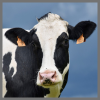
Extending the voluntary waiting period (VWP) reduces the frequency of calvings. This may benefit cow health but includes the risk of fattening and low milk yield at the end of the lactation. The aim of this study was to evaluate the effects of the VWP on metabolism and body condition during different phases of the lactation and start of the next lactation.
Read more
-

Oct
05
Writing Workshop September 2023

ASAS hosted the first of two annual Writing workshops last week in Hollywood Beach, FL. The conference attendees were 25 ASAS member graduate students and young scientists from 12 different schools and agencies in the US and Canada.
Read more
-

Oct
05
Interpretive Summary: Iron requirements of broiler chickens as affected by supplemental phytase
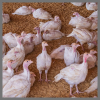
Iron is routinely supplemented in broiler feeds to prevent possible dietary deficiencies. We carried out an experiment with the objective of evaluating the Fe requirements of broilers fed with the exogenous enzyme phytase.
Read more
-

Oct
05
Interpretive Summary: Dietary lysolecithin supplementation improves growth performance of weaned piglets via improving nutrients absorption, lipid metabolism, and redox status

Early weaning has been widely adopted to maximize productivity for swine production. However, the weaned piglets suffer from insufficient energy intake due to the reduced feed intake caused by weaning stress, which compromises the growth rate of piglets.
Read more
-

Oct
05
Interpretive Summary: Influence of handling in corrals on the temperament of different breeds of beef cattle raised in Brazil

Some scientific studies have shown the negative effect of poor handling on the welfare and temperament of animals. Furthermore, there is evidence that more reactive cattle present the highest blood cortisol concentrations indicative of stress.
Read more
-

Oct
05
Interpretive Summary: A comparative study on feeding timing and additive types of broilers in a high-temperature environment

The increasing frequency of exposure to high-temperature environments has prompted research into nutritional approaches to alleviate heat stress in chickens, but little research has been reported on feeding timing. The aim of this study was to determine the effect of feeding timing on the effectiveness of the natural antioxidants vitamin C (VC) and green tea extract (GTE).
Read more
-

Oct
05
Interpretive Summary: Short communication: commercial diets for pigs in the United States contain more calcium than formulated
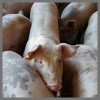
Calcium is often oversupplied in pig diets because limestone, the main source of Ca in pig diets, is an inexpensive feed ingredient and is often used as a carrier in premixes or a diluent in feed ingredients. However, excess Ca may be detrimental to P digestibility and pig growth performance.
Read more
-

Oct
05
Interpretive Summary: The effects of timing of high immune response phenotyping in relation to weaning on immune responses of crossbred beef calves
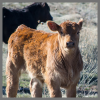
Understanding the optimal time to immunophenotype beef calves is important for the accurate estimation of their genetic ability to resist disease. The compound stressors experienced by a calf during weaning may have a similar impact on the immune system as chronic stress.
Read more
-

Sep
28
Interpretive Summary: EPA rejects environmental activist’s petitions

The United States Environmental Protection Agency (EPA) has rejected two petitions sponsored by environmental agencies that would potentially have a negative impact on American farmers and ranchers. The petitions regarded revising the Clean Water Act regulations for the National Pollutant Discharge Elimination System (NPDES) Concentrated Animal Feeding Operations (CAFOs) program.
Read more
-

Sep
28
Interpretive Summary: EPA releases revised WOTUS rule

The United States Environmental Protection Agency (EPA) and the Department of the Army have issued a final rule regarding the Waters of the United States Rule (WOTUS). This announcement comes on the heels of the Supreme Court’s May 2023 decision in the Sackett v. EPA case, which overturned portions of the WOTUS rule.
Read more
-

Sep
28
Interpretive Summary: FMMO hearings begin
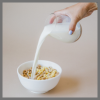
The Federal Milk Marketing Order (FMMO) Pricing Formula hearings, held by the United States Department of Agriculture (USDA) began last month. The USDA will hold a hearing on proposals to amend the pricing formulas in the 11 FMMOs. Each FMMO includes a classified price plan, a system of minimum prices, terms of the order, and provisions for administering the order.
Read more
-

Sep
28
Interpretive Summary: Governors send letter regarding Farm Bill

The National Governors Association has sent a letter to the Agriculture Committee leaders in the House and Senate, expressing their wishes for the Farm Bill. The National Governors Association assembled a task force to compile the key priorities for their states and believe their priorities highlight the important role farm bill programs play in strengthening communities.
Read more
 OctInterpretive Summary: Development of genetically improved tropical-adapted dairy cattle
OctInterpretive Summary: Development of genetically improved tropical-adapted dairy cattle According to recent estimates, about 80% of cattle reside in tropical or subtropical regions (Cooke et al., 2020a). The number of farmers and consumers, as well as overall production (e.g., annual milk production), is also greater in the tropics. However, cattle productivity in these regions is underwhelming compared with most temperate zones characterized by high-input farming practices and yields correlated with the fitness of the breeds to their system.
According to recent estimates, about 80% of cattle reside in tropical or subtropical regions (Cooke et al., 2020a). The number of farmers and consumers, as well as overall production (e.g., annual milk production), is also greater in the tropics. However, cattle productivity in these regions is underwhelming compared with most temperate zones characterized by high-input farming practices and yields correlated with the fitness of the breeds to their system. OctInterpretive Summary: Breeds and lines of sheep suitable for production in challenging environments
OctInterpretive Summary: Breeds and lines of sheep suitable for production in challenging environments The adaptability and success of sheep are confirmed by the fact that they are the world’s most diverse mammalian livestock species, contributing some 25% to the global number of farm animal breeds (Cottle, 2010). The latter author showed that the ovine species is indeed globally successful and present in farming landscapes throughout the world, ranging from arid to high rainfall areas and from sea level to the highest mountains.
The adaptability and success of sheep are confirmed by the fact that they are the world’s most diverse mammalian livestock species, contributing some 25% to the global number of farm animal breeds (Cottle, 2010). The latter author showed that the ovine species is indeed globally successful and present in farming landscapes throughout the world, ranging from arid to high rainfall areas and from sea level to the highest mountains. OctInterpretive Summary: Rumen and cecum bacteria of beef cattle that differ in feed efficiency fed a forage diet
OctInterpretive Summary: Rumen and cecum bacteria of beef cattle that differ in feed efficiency fed a forage diet Feed is one of the greatest costs associated with beef production. Modifying the efficiency that feed is used offers a potential mechanism to improve production efficiency.
Feed is one of the greatest costs associated with beef production. Modifying the efficiency that feed is used offers a potential mechanism to improve production efficiency. OctInterpretive Summary: Effect of increasing concentration of ergot alkaloids in the diet of feedlot cattle: performance, welfare, and health parameters
OctInterpretive Summary: Effect of increasing concentration of ergot alkaloids in the diet of feedlot cattle: performance, welfare, and health parameters Ergot alkaloids (EA) are produced by a parasitic fungus (Claviceps purpurea) during the cereal grain growth cycle. Feeding cereal grain containing EA to beef cattle can cause constriction of blood vessels, hyperthermia, gangrene of extremities (ears, hoof, and tail), reduced feed intake and growth, and even death. Feed cleaning and processing technologies have been developed to remove EA from the human food chain, thus diverting contaminated feed for livestock use.
Ergot alkaloids (EA) are produced by a parasitic fungus (Claviceps purpurea) during the cereal grain growth cycle. Feeding cereal grain containing EA to beef cattle can cause constriction of blood vessels, hyperthermia, gangrene of extremities (ears, hoof, and tail), reduced feed intake and growth, and even death. Feed cleaning and processing technologies have been developed to remove EA from the human food chain, thus diverting contaminated feed for livestock use. OctInterpretive Summary: Effects of wildfire smoke PM2.5 on indicators of inflammation, health, and metabolism of preweaned Holstein heifers
OctInterpretive Summary: Effects of wildfire smoke PM2.5 on indicators of inflammation, health, and metabolism of preweaned Holstein heifers Wildfires contribute to fine particulate matter (PM2.5) pollution throughout the United States. Wildfire-PM2.5 exposure negatively affects human health and dairy cow production; however, the effects on calves are not known.
Wildfires contribute to fine particulate matter (PM2.5) pollution throughout the United States. Wildfire-PM2.5 exposure negatively affects human health and dairy cow production; however, the effects on calves are not known. OctInterpretive Summary: Genetic parameters for pulmonary arterial pressure, yearling performance, and carcass ultrasound traits in Angus cattle
OctInterpretive Summary: Genetic parameters for pulmonary arterial pressure, yearling performance, and carcass ultrasound traits in Angus cattle Beef cattle residing >1,500 m are subject to reduced atmospheric oxygen levels when compared with beef cattle at lower elevations which may result in hypoxia-induced pulmonary hypertension and right-side heart failure. Breeders use pulmonary arterial pressures to identify animals at risk of right-side heart failure and to select breeding animals that are less susceptible to the problem.
Beef cattle residing >1,500 m are subject to reduced atmospheric oxygen levels when compared with beef cattle at lower elevations which may result in hypoxia-induced pulmonary hypertension and right-side heart failure. Breeders use pulmonary arterial pressures to identify animals at risk of right-side heart failure and to select breeding animals that are less susceptible to the problem. OctInterpretive Summary: Changes in gut microbiota and short-chain fatty acids are involved in the process of canine obesity after neutering
OctInterpretive Summary: Changes in gut microbiota and short-chain fatty acids are involved in the process of canine obesity after neutering Neutering contributes to canine obesity risk. In this study, obesity rate of 60% at 21 mo after neutering was observed. Obese dogs had greater serum triglyceride, total cholesterol, high-density lipoprotein cholesterol, and leptin levels and lower adiponectin level than ideal weight dogs.
Neutering contributes to canine obesity risk. In this study, obesity rate of 60% at 21 mo after neutering was observed. Obese dogs had greater serum triglyceride, total cholesterol, high-density lipoprotein cholesterol, and leptin levels and lower adiponectin level than ideal weight dogs. OctInterpretive Summary: Efficient establishment of an optimized culture condition for cashmere goat primary hair follicle stem cells
OctInterpretive Summary: Efficient establishment of an optimized culture condition for cashmere goat primary hair follicle stem cells Hair follicle stem cells (HFSCs) are indispensable for skin repair, hair growth, development, and regeneration. One major challenge in primary cell culture is achieving efficient growth while maintaining stemness to achieve a high yield.
Hair follicle stem cells (HFSCs) are indispensable for skin repair, hair growth, development, and regeneration. One major challenge in primary cell culture is achieving efficient growth while maintaining stemness to achieve a high yield. OctInterpretive Summary: Effect of voluntary waiting period on metabolism of dairy cows during different phases of the lactation
OctInterpretive Summary: Effect of voluntary waiting period on metabolism of dairy cows during different phases of the lactation Extending the voluntary waiting period (VWP) reduces the frequency of calvings. This may benefit cow health but includes the risk of fattening and low milk yield at the end of the lactation. The aim of this study was to evaluate the effects of the VWP on metabolism and body condition during different phases of the lactation and start of the next lactation.
Extending the voluntary waiting period (VWP) reduces the frequency of calvings. This may benefit cow health but includes the risk of fattening and low milk yield at the end of the lactation. The aim of this study was to evaluate the effects of the VWP on metabolism and body condition during different phases of the lactation and start of the next lactation. OctWriting Workshop September 2023
OctWriting Workshop September 2023 ASAS hosted the first of two annual Writing workshops last week in Hollywood Beach, FL. The conference attendees were 25 ASAS member graduate students and young scientists from 12 different schools and agencies in the US and Canada.
ASAS hosted the first of two annual Writing workshops last week in Hollywood Beach, FL. The conference attendees were 25 ASAS member graduate students and young scientists from 12 different schools and agencies in the US and Canada. OctInterpretive Summary: Iron requirements of broiler chickens as affected by supplemental phytase
OctInterpretive Summary: Iron requirements of broiler chickens as affected by supplemental phytase Iron is routinely supplemented in broiler feeds to prevent possible dietary deficiencies. We carried out an experiment with the objective of evaluating the Fe requirements of broilers fed with the exogenous enzyme phytase.
Iron is routinely supplemented in broiler feeds to prevent possible dietary deficiencies. We carried out an experiment with the objective of evaluating the Fe requirements of broilers fed with the exogenous enzyme phytase. OctInterpretive Summary: Dietary lysolecithin supplementation improves growth performance of weaned piglets via improving nutrients absorption, lipid metabolism, and redox status
OctInterpretive Summary: Dietary lysolecithin supplementation improves growth performance of weaned piglets via improving nutrients absorption, lipid metabolism, and redox status Early weaning has been widely adopted to maximize productivity for swine production. However, the weaned piglets suffer from insufficient energy intake due to the reduced feed intake caused by weaning stress, which compromises the growth rate of piglets.
Early weaning has been widely adopted to maximize productivity for swine production. However, the weaned piglets suffer from insufficient energy intake due to the reduced feed intake caused by weaning stress, which compromises the growth rate of piglets. OctInterpretive Summary: Influence of handling in corrals on the temperament of different breeds of beef cattle raised in Brazil
OctInterpretive Summary: Influence of handling in corrals on the temperament of different breeds of beef cattle raised in Brazil Some scientific studies have shown the negative effect of poor handling on the welfare and temperament of animals. Furthermore, there is evidence that more reactive cattle present the highest blood cortisol concentrations indicative of stress.
Some scientific studies have shown the negative effect of poor handling on the welfare and temperament of animals. Furthermore, there is evidence that more reactive cattle present the highest blood cortisol concentrations indicative of stress. OctInterpretive Summary: A comparative study on feeding timing and additive types of broilers in a high-temperature environment
OctInterpretive Summary: A comparative study on feeding timing and additive types of broilers in a high-temperature environment The increasing frequency of exposure to high-temperature environments has prompted research into nutritional approaches to alleviate heat stress in chickens, but little research has been reported on feeding timing. The aim of this study was to determine the effect of feeding timing on the effectiveness of the natural antioxidants vitamin C (VC) and green tea extract (GTE).
The increasing frequency of exposure to high-temperature environments has prompted research into nutritional approaches to alleviate heat stress in chickens, but little research has been reported on feeding timing. The aim of this study was to determine the effect of feeding timing on the effectiveness of the natural antioxidants vitamin C (VC) and green tea extract (GTE). OctInterpretive Summary: Short communication: commercial diets for pigs in the United States contain more calcium than formulated
OctInterpretive Summary: Short communication: commercial diets for pigs in the United States contain more calcium than formulated Calcium is often oversupplied in pig diets because limestone, the main source of Ca in pig diets, is an inexpensive feed ingredient and is often used as a carrier in premixes or a diluent in feed ingredients. However, excess Ca may be detrimental to P digestibility and pig growth performance.
Calcium is often oversupplied in pig diets because limestone, the main source of Ca in pig diets, is an inexpensive feed ingredient and is often used as a carrier in premixes or a diluent in feed ingredients. However, excess Ca may be detrimental to P digestibility and pig growth performance. OctInterpretive Summary: The effects of timing of high immune response phenotyping in relation to weaning on immune responses of crossbred beef calves
OctInterpretive Summary: The effects of timing of high immune response phenotyping in relation to weaning on immune responses of crossbred beef calves Understanding the optimal time to immunophenotype beef calves is important for the accurate estimation of their genetic ability to resist disease. The compound stressors experienced by a calf during weaning may have a similar impact on the immune system as chronic stress.
Understanding the optimal time to immunophenotype beef calves is important for the accurate estimation of their genetic ability to resist disease. The compound stressors experienced by a calf during weaning may have a similar impact on the immune system as chronic stress. SepInterpretive Summary: EPA rejects environmental activist’s petitions
SepInterpretive Summary: EPA rejects environmental activist’s petitions The United States Environmental Protection Agency (EPA) has rejected two petitions sponsored by environmental agencies that would potentially have a negative impact on American farmers and ranchers. The petitions regarded revising the Clean Water Act regulations for the National Pollutant Discharge Elimination System (NPDES) Concentrated Animal Feeding Operations (CAFOs) program.
The United States Environmental Protection Agency (EPA) has rejected two petitions sponsored by environmental agencies that would potentially have a negative impact on American farmers and ranchers. The petitions regarded revising the Clean Water Act regulations for the National Pollutant Discharge Elimination System (NPDES) Concentrated Animal Feeding Operations (CAFOs) program. SepInterpretive Summary: EPA releases revised WOTUS rule
SepInterpretive Summary: EPA releases revised WOTUS rule The United States Environmental Protection Agency (EPA) and the Department of the Army have issued a final rule regarding the Waters of the United States Rule (WOTUS). This announcement comes on the heels of the Supreme Court’s May 2023 decision in the Sackett v. EPA case, which overturned portions of the WOTUS rule.
The United States Environmental Protection Agency (EPA) and the Department of the Army have issued a final rule regarding the Waters of the United States Rule (WOTUS). This announcement comes on the heels of the Supreme Court’s May 2023 decision in the Sackett v. EPA case, which overturned portions of the WOTUS rule. SepInterpretive Summary: FMMO hearings begin
SepInterpretive Summary: FMMO hearings begin The Federal Milk Marketing Order (FMMO) Pricing Formula hearings, held by the United States Department of Agriculture (USDA) began last month. The USDA will hold a hearing on proposals to amend the pricing formulas in the 11 FMMOs. Each FMMO includes a classified price plan, a system of minimum prices, terms of the order, and provisions for administering the order.
The Federal Milk Marketing Order (FMMO) Pricing Formula hearings, held by the United States Department of Agriculture (USDA) began last month. The USDA will hold a hearing on proposals to amend the pricing formulas in the 11 FMMOs. Each FMMO includes a classified price plan, a system of minimum prices, terms of the order, and provisions for administering the order. SepInterpretive Summary: Governors send letter regarding Farm Bill
SepInterpretive Summary: Governors send letter regarding Farm Bill The National Governors Association has sent a letter to the Agriculture Committee leaders in the House and Senate, expressing their wishes for the Farm Bill. The National Governors Association assembled a task force to compile the key priorities for their states and believe their priorities highlight the important role farm bill programs play in strengthening communities.
The National Governors Association has sent a letter to the Agriculture Committee leaders in the House and Senate, expressing their wishes for the Farm Bill. The National Governors Association assembled a task force to compile the key priorities for their states and believe their priorities highlight the important role farm bill programs play in strengthening communities.



